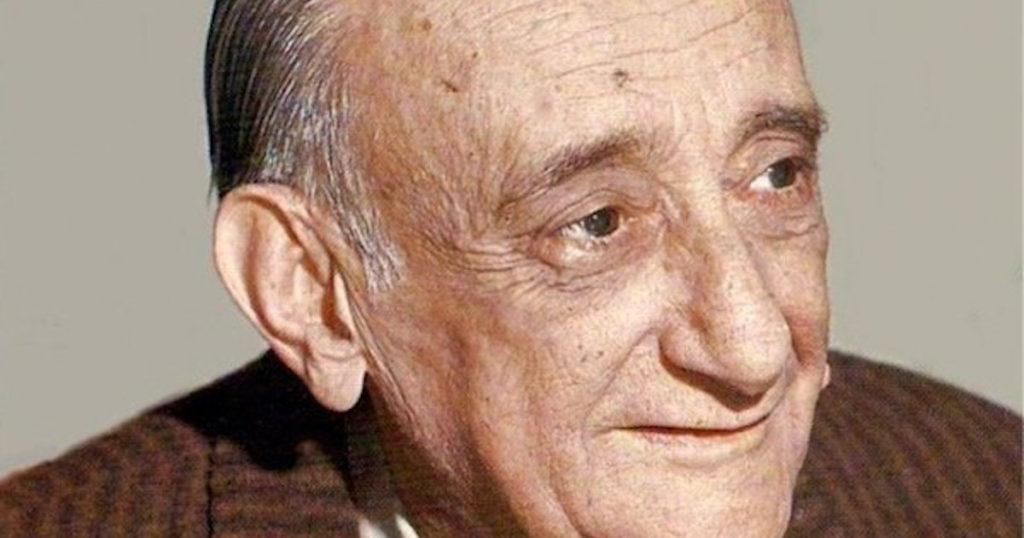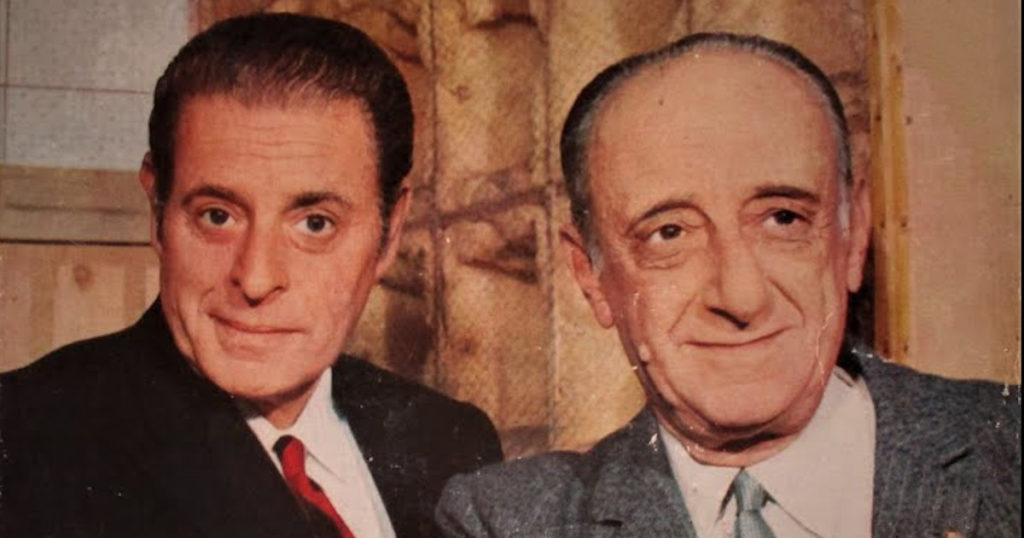
Do you like Juan D’Arienzo?
What kind of question is this? Of course, everyone does. No matter if it’s a tango, milonga or a vals – dancing to D’Arienzo is considered the high point in any milonga.
Why is D’Arienzo’s music is so popular? Why the DJ can forget to play music of tango giants like Troilo or Pugliese, but if he forgets D’Arienzo he/she will forever burn in the tango hell?
Let me tell you a tango DJ’s joke… well, it’s not a joke, I would say – it’s more of a trick.
“What is the easiest way for a DJ to get applause from the dancers in a milonga?”
“Play them a few veeeeryyy slooooow tandas and then D’Arienzo tanda starting with ‘Mandria’!”
They will be happy to dance to something that is so danceable and so inspiring that the applause usually starts instinctively.
But why is Juan D’Arienzo’s music so good? What makes it so danceable? Why so many people like it so much, no matter what is their style?
I am not a musicologist and for this article I didn’t make any research – here I just express what I feel and what I’ve learned over the years of dancing and teaching. Take them as my subjective contribution to your understanding of his music.

1. The human measure
D’Arienzos music fits human movements just like a glove or, to be more precise, it fits tango dancers’ movements just like a glove. What I mean by saying that?
Imagine trying to put a glove on a mouse paw? It won’t fit, unless the mouse was from Disney’s world. You would have to design a different glove for a mouse – which, for sure, wouldn’t fit on a human hand.
The same goes with the music. If it’s too fast or too slow, people would have trouble getting the rhythm. Dancing music (danceable music) usually has the human measure.
Majority of tango songs has the reasonable speed and D’Arienzo is not an exception. What makes D’Arienzos music special is that it touches that sweet spot where the magic happens. It’s fast enough so that dancers feel energized, but not too fast so that it becomes hard to dance.
Few other orchestras also get that sweet spot, but D’Arienzo has few other qualities that make all the difference.
Hey, sorry to interrupt…
Do you like reading my articles? If you do please consider a small contribution to the existence of this blog.
I don’t sell a book or run ads: I share these articles for free. Unfortunately I also have to pay my bills, so if you see value in my work please consider a small donation/gratuity (the same way you tip your favorite bartender).
From my heart to yours!
Ivica
Securely processed via PayPal
2. It is energizing
“But wait, D’Arienzo’s music is not always fast”, you might ask and you would be right. It’s not always fast – but it’s always energizing.
Let’s put Alberto Echague’s (or other singers) masculine voice aside, it’s the orchestra that gives energy to any piece it tried to play. Even those which are usually slow and melancholic.
How does he do it? As I said, this goes beyond my expertise, but I believe it has two ways of achieving it: 1) the musician “attacks” the beat fast; never delaying or calculating, which gives a feeling of determination and energy, and 2) instruments hit the beats with different tonalities, which gives dynamics and avoids flatness.
Let me say a little bit more about the second point. D’Arienzo was a traditionalist: he followed the sensibility of the old tangos and they were connected with habanera. Play the beginning of Bizet’s “Carmen”:
…and you can almost hear the voice of Echague singing:
Ahogando este grito
La bruja
que sube del pecho,
y llega a los labios carga’o de rencor
Notes often go just like the habanera: down-up up-down, down-up up-down…
3. Juan got your back
In my opinion the most important thing is that D’Arienzo works with the dancer – not with some artistic pursuit (which btw often makes modern tango music undanceable, even unlistenable).
He said that the singer should be a part of the orchestra – not the star. Using this idea I can understand that he went even further – made the orchestra a part of the milonga. His music was nothing without dancers and he adapted it so well that today one listening to his music almost instinctively gets up to dance.
What does it mean? Well, first of all discipline, or as he puts it “… a strength and character…” His music never gets in to abstract and implicit interpretations – everything that happens is loud and clean, so dancers can hear and follow. Whenever you recognize D’Arienzo you can go on the dance floor without being afraid that the part of the song might become undanceable and blurred.
He helps you! He’s got your back!
Even in the late years, after 1950s, when his music becomes angry and noisy – complete pain to the ears (too bad many people on festivals and marathons play and dance to it) – he is always clear and easy to understand.
This quality of D’Arienzo’s music is basically his ability to connect with the dancer on the dance floor. In fact, it connects so well with the dancers that, for example, it is almost impossible not to predict when the song finishes – it is like the orchestra is telling you:
“Watch, watch, watch! Ready, steady… Go!” Finish!
4. Gives dancers dancing material
Let’s be clear: D’Arienzo’s focused on heavy passion, emotions of suffering and broken hearts. It’s rather cheerful and playful, and brings a lot of focus to the motional part of tango.
There it gives dancers a lot of material to work with. The dancer can clearly recognize when one bar finishes and the new one starts. Just a few notes can bridge the end of one measure and beginning of the next one, and that can be interpreted with an easy ocho cortado, a cross or a corrida. A very predictable passage can come up at the end of the song and most of the dancers instinctively know that they should add something in their sequence (usually a few giros).
Saying that D’Arienzo’s music is heavily connected to the rhythm (he was called “The King of the Rhythm”) doesn’t mean that it’s the only quality he has. Dancing to D’Arienzo still allows you to follow the melody or create interpretations that are more emotionally charged.
So, what is your experience? Do you like dancing to D’Arienzo? Share your thoughts in the comments.

Hello Ivica, thank you very much for your article. Very interesting and educating! And to some extent – confirming our own observations regarding the D’Arienzo attraction! I would only mention that there is also a layer that, to me, is especially touching when dancing to D’Arienzo (I am a dj and a dancer): The power of individual instruments within a given music piece! The power of those short moments when we hear the solo piano or violin… These are my favorite parts! Some present-day orquestras attempt to imitate D’Arienzo’s arrangements: as a dj I just don’t hear these powerful individual instrumental moments in many of their interpretations. As a result, these interpretations sound very rhythmic and very flat to me. And after a consideration, I do not play the orquestra and revert back to the original D’Arienzo pieces… Kind regards, Anna